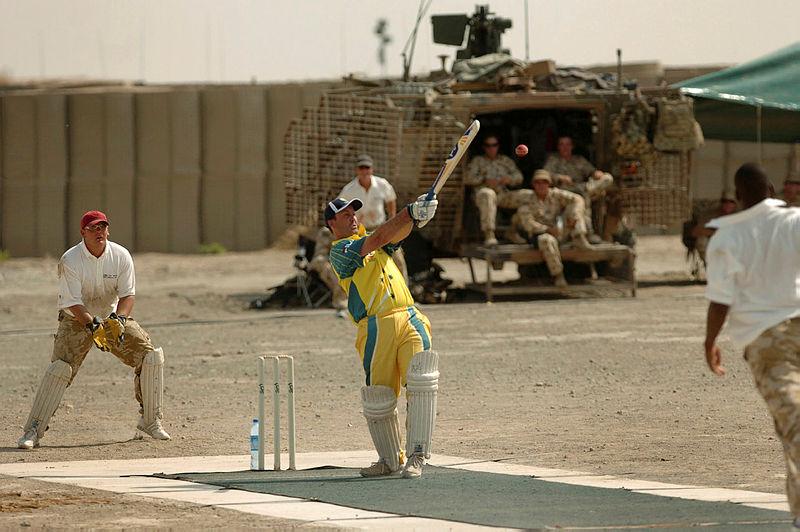Fresh thinking to deal with ‘not quite wars’ (part 2)
Posted By Nathan Finney on September 14, 2017 @ 11:00

Military men and women love their sports metaphors (no matter their nationality, from my experience); invariably, whatever the mission, goal or enemy, it can be described by sport. So, in that vein, let’s continue our discussion on the evolution of military thought by dipping into a cross-cultural use of the sports metaphor.
Today’s security environment requires military professionals who can play a game like cricket more than one like grid-iron football. Today’s warfare is enduring, has no real end point, and requires nuanced strategy that includes consideration of endurance. While brute force will always be an element of national security, especially for the uniformed personnel whose job it is to threaten or inflict violence on an adversary for national interest, a carefully finessed use of force that has an eye to a longer game of strategic balance and competition is more the norm for future requirements.
As mentioned in my last piece [1] here on The Strategist, a shift in military doctrine to focus on continuous campaigning to create strategic advantage—as opposed to a focus on linear ‘phases’ that culminate in ‘decisive’ military action and transfer back to civilian actions—is a welcome change, and one more in line with the need for wicket-keepers than linebackers. However, to truly get our military institutions prepared for conflict that’s based around continuing advantage and assertion of control [2] instead of decisive tactical victory, we must first educate our leaders and planners.
The education process begins at the entry of men and women into our military. War must be taught as an overarching concept to be embraced and understood, not merely as a big, amorphous concept in which battlefield tactics somehow play a role. For example, instead of constraining minds by focusing exclusively on tactics as a physical action undertaken by squads or platoons and explained through select battle vignettes devoid of their context, battles could be taught in the context of why they occurred and most especially their long-term impact on an overall conflict or campaign. For instance, rather than spending days detailing how Hannibal defeated consuls Paullus and Varro at Cannae through a double envelopment [3], instructors could provide an overall contextual look at Hannibal’s campaign, and ultimate defeat, through a Fabian strategy [4] of exhaustion and invasion of Carthage, while also quickly describing the tactics involved that led to the employment of such a strategy and the result. As the shift in Joint Publication 5-0 to campaigning recognises, war is a condition to be managed, not a series of steps to be accomplished—we should teach it that way, as well.
Such an approach would not distract from the development of tactical and technical skills required of our junior leaders, but rather provide them better context in which to understand the uses of their tactical and technical expertise. It will also set the foundation for these men and women to succeed as future senior leaders. Because when it comes down to it, even while we’re developing people who can threaten or exercise violence on behalf of the state, we’re also developing leaders who can understand, influence and execute strategy—the theory of success required in continuous campaigning. Just as ‘[g]ood strategy is a non-linear process that must constantly be tended and adapted, and vigilance is rewarded [5]’, so goes our military leaders’ ability to think about and manage that process. We need cricketers who can play a long, continuous game, not footballers who put all their effort into a limited timeframe.
To do that, however, we also need the institutional structures, authorities and processes (to include interoperability with allies and partners) in place to develop such leaders, create the force structure to succeed on future battlefields and extended campaigns, and create the strategies to succeed in such an environment. Approaches to do this from an institutional perspective will be covered in a future post.
Article printed from The Strategist: https://aspistrategist.ru
URL to article: /fresh-thinking-deal-not-quite-wars-part-2/
URLs in this post:
[1] my last piece: /fresh-thinking-deal-not-quite-wars-part-1/
[2] continuing advantage and assertion of control: https://www.usni.org/store/books/professional-books-sea-services/navy-textbooksprofessional-reading/military-strategy
[3] detailing how Hannibal defeated consuls Paullus and Varro at Cannae through a double envelopment: https://www.youtube.com/watch?v=CQNCGqfjaBc
[4] Fabian strategy: https://en.wikipedia.org/wiki/Fabian_strategy
[5] [g]ood strategy is a non-linear process that must constantly be tended and adapted, and vigilance is rewarded: https://defense360.csis.org/defense-strategy-and-the-iron-triangle-of-painful-tradeoffs/
Click here to print.